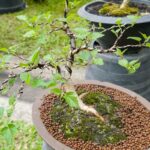Bonsai trees require a particular watering schedule. You’ll want to water them about once per week or when their soil feels dry on top. However, the method for watering them is very different from other plants.
If you want to grow a bonsai tree at home, you’ll want to learn how to water the tree correctly.
Bonsai tree soil can drain quickly, so it doesn’t hold much water.

That means you need to watch the tree’s potting soil very closely.
Otherwise, you could easily over or underwater it!
Table of Contents
How Often Do I Water a Bonsai Tree?
In general, you should water your bonsai tree about once a week.
However, you may need to water it more or less frequently, depending on the humidity in your area.
You should check the topsoil of the plant every day.
Several conditions can change the watering frequency.
You’ll want to make a note of these factors that change watering times:
- Lighting conditions
- Temperature
- Humidity
- Type of soil
If you’re currently in a dry climate, you’ll likely need to water your bonsai much more frequently than someone who lives in a humid area.
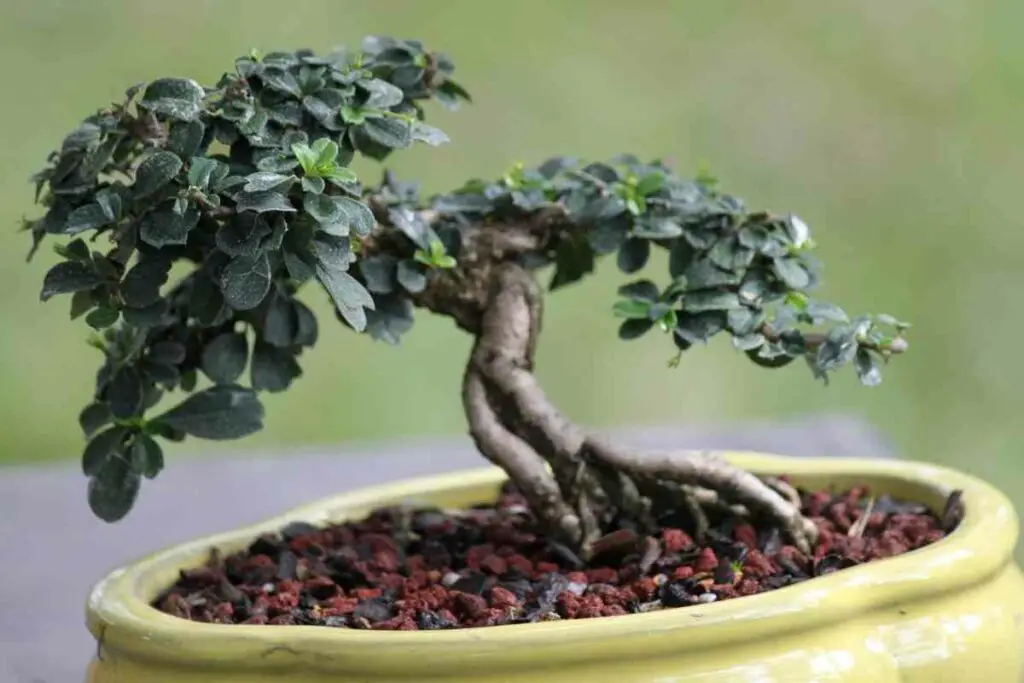
Bonsai trees love humidity, but the excessive moisture in the air means more water stays in their soil for longer.
It’s also essential that you understand your bonsai tree. Every species will require different watering periods!
For Example – The jade bonsai tree doesn’t need frequent watering and thrives during occasional dry periods.
However, not every bonsai tree likes dry soil- most of them don’t!
You’ll want to touch the topsoil with your finger every day. It’s effortless to turn this into a habit.
If it feels completely dry, then it’s time for you to water the bonsai! You won’t want to water it if the topsoil still feels even slightly damp.
Overwatering and under watering a bonsai tree can cause problems!
Signs of Overwatering
The signs of overwatering a bonsai are very easy to spot!
The leaves will appear yellow, and the smaller branches will shrink. The tree will appear generally unhealthy.
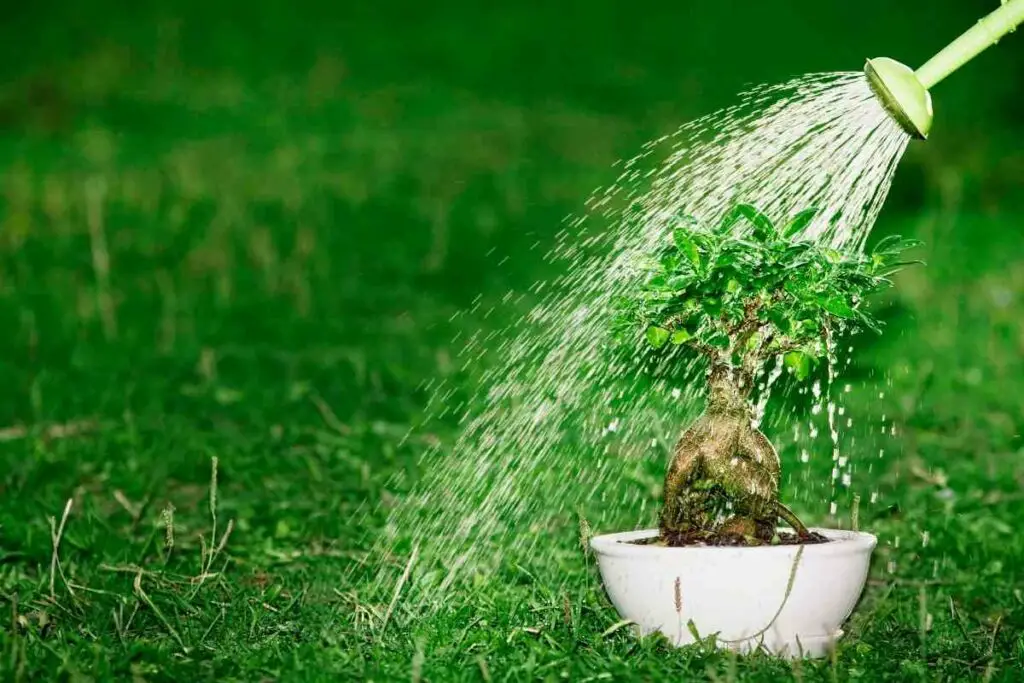
Overwatering causes the roots to swell and drown, depriving the plant of oxygen.
Without enough oxygen, the tree won’t continue growing and will cause several problems. If you don’t adjust your watering routine, the plant is sure to die!
Overwatering can also occur when the soil doesn’t provide the tree with enough drainage.
Take Action – You may need to move it to a new pot, with better draining, or change the soil.
Signs of Underwatering
On the other hand, underwatering a bonsai tree can also be a problem!
You’ll need to find a balance in your watering routine. An under-watered bonsai tree will wilt very quickly.
The leaves will also look crunchy and dry, then fall off.
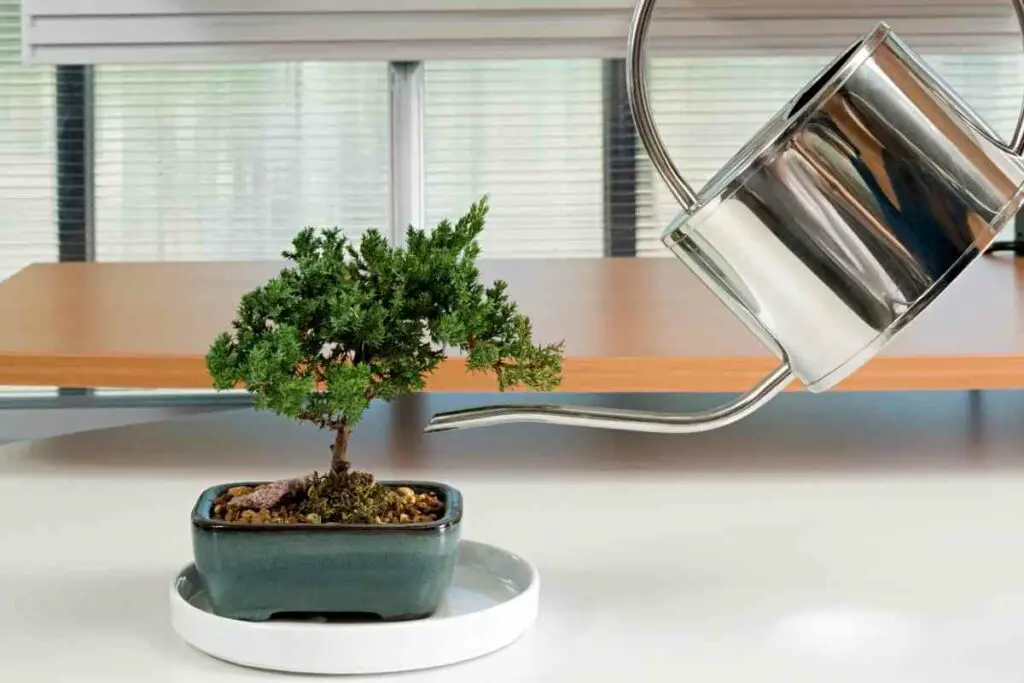
You’ll want to check if the bonsai is still alive before you start trying to revive it.
Make a small cut on the trunk. If you see a layer of green, the tree is still living, and you can save it!
Sadly – If the cut is brown, the tree is already dead and won’t revive, even with more water.
How Do I Know If a Bonsai Tree Needs Water?
While many people recommend that you water a bonsai tree at least once a week, weather conditions can cause it to need more frequent watering.
Luckily, there’s a straightforward way to tell if your bonsai plant needs more water.
All you need to do is lightly dig your finger into the soil.
You want your finger to go about an inch into the potting soil. If you feel more moisture in the lower part of the soil than the top, it’s time for you to water the bonsai!
Overall – You should water the bonsai tree when you notice the top portion of the soil becoming dry. You don’t need to drench the dirt every time, but you should always keep the soil moist for the plant to thrive.
How Do I Water a Bonsai Tree?
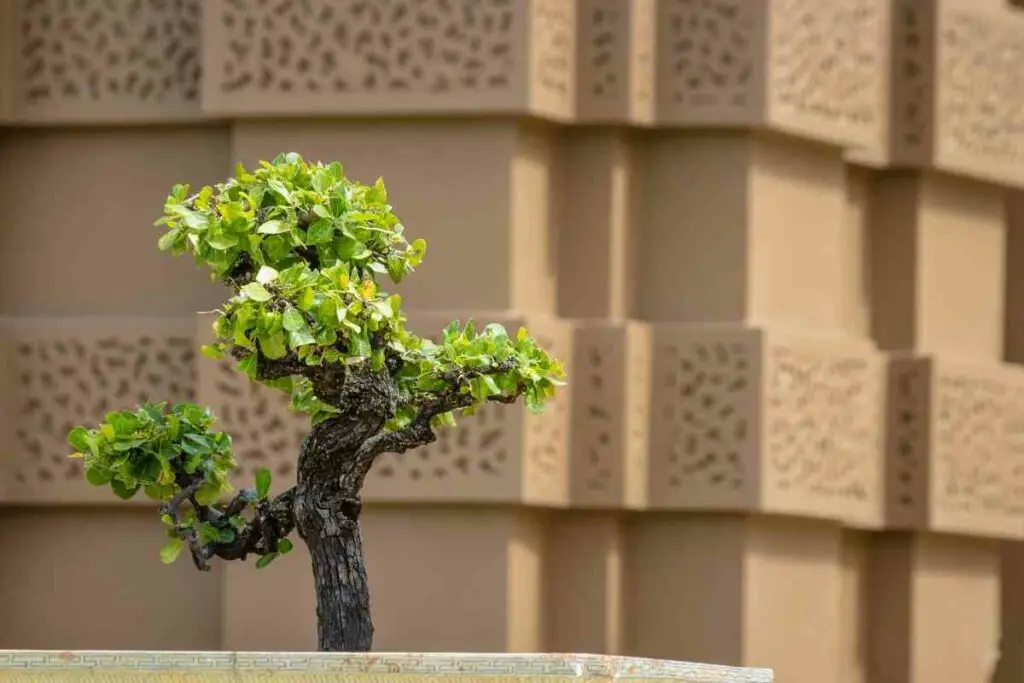
When you need to water your bonsai, there are two main methods that you can use.
The First Method
You gently pour water over the soil like normal for the first method.
You don’t want rushing water to damage the soil, so pour the water out slowly!
You’ll want to keep slowly pouring water over the soil until you see water lying over the surface.
Then, wait for the water to drain and continue watering. You should keep going until the water runs out of the drainage holes.
You should have a humidity or drip tray in place to catch water.
The Second Method
The second watering method is usually the go-to for bonsai owners!
Fill a bucket or large sink with water first. You want there to be enough to cover the soil fully.
Then, slowly submerge the bonsai tree into the water- it shouldn’t go more than an inch above the start of the trunk!
You’ll see plenty of bubbles rising to the surface: the more bubbles, the more water the soil needs. Keep the tree in the water until no more bubbles rise.
Many bonsai enthusiasts use this method once per week since it lets them know how their watering routine works.
Final Step – Once the bubbling stops, slowly remove the bonsai tree and allow plenty of time to drain. You won’t want to damage your furniture with the water!
What Time Do I Water a Bonsai Tree?
You’ll want to water your bonsai tree when the sun isn’t at the highest point in the sky- any other time is good!

Watering your bonsai during the hottest part of the day can easily harm it.
You should water the tree in the late afternoon or evening so the soil doesn’t dry out overnight.
Always keep an eye on the soil if it’s very hot outside. You may need to water the plant twice a day during the peak of the summer!
However, you’ll want to develop a routine that works the best for you.
If it’s easier to remember to check on your tree in the morning, then that’s what you should do!
Also Read
- How to Dry Basil Leaves: A Professional Guide
- Is an Avocado a Fruit or Vegetable? Simple Answer and Explanation
- Does Pineapple Have Seeds? Exploring the Anatomy of Pineapples
- Blooming Through Winter: Can I Grow Vegetables Indoors in the Winter?
- What Can You Grow in a Greenhouse All Year Round: A Guide to Year-Round Greenhouse Gardening
- Are Blueberries Blue? Debunking the Myth of Their Color















